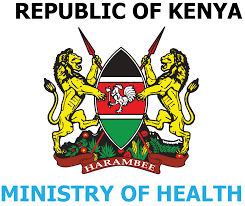HIV Recent Infection Surveillance
HIV Recency Surveillance involves the identification and reporting of newly diagnosed HIV-infected persons whose infection is determined to be a recent HIV infection rather than a long standing one. For Kenya’s surveillance system, a recent HIV infection is defined on acquired within the last 12 months.
A recent HIV infection can be determined through a serologic test that distinguishes recently acquired HIV-1 infection from long-standing infection among newly diagnosed individuals. There are rapid tests for recent infection (RTRI) that take 20 minutes to determine this for example the Asanté™ test by Sedia Biosciences Corporation. To mitigate the possibility of false recent results, Kenya has adopted a recent infection testing algorithm (RITA), rather than relying on RTRI test results only, to categorize newly diagnosed HIV-positive individuals as having recent or long-term infections. For this algorithm, a sample is first tested using the RTRI. The samples that test ‘recent’ on RTRI are then tested for viral load and those with viral load (≥1000 copies/ml) are confirmed to be recent and those with viral load (< 1000 copies/ml) are re-categorized as samples with a long-term infection (See Figure 1 below).

The recency surveillance system is aimed at determining the proportion of new HIV diagnoses that are recent and monitoring trends in recent infections by socio-demographic characteristics such as age, sex, marital status and geographic location. As the system matures, behavioral risk factors for recent infection can be collected. Stakeholders can utilize synthesized data from the recency surveillance system, which are available in the dashboards to understand the dynamics of recent HIV infections and to guide appropriate resource allocation for targeted interventions. In addition to the surveillance dashboards, the CQI dashboards and recency online course are resources to facilitate data dissemination and use as well as improved HIV programming.
